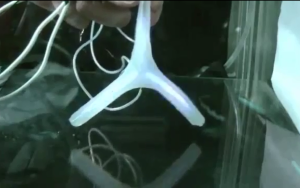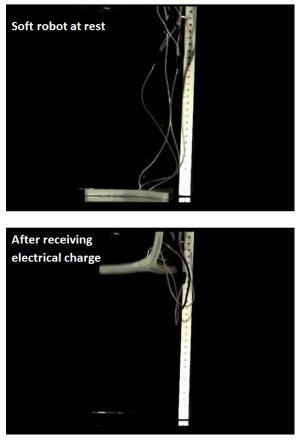A DARPA-sponsored initiative to build soft-bodied robots has led to some pretty impressive breakthroughs in robotics research, ranging from being able to access previously unreachable areas to successfully gripping and lifting oddly-shaped, difficult-to-grab objects.

DARPA has already made considerable progress in the area of soft robotics.
The latest example of the tremendous capabilities of this new technology comes from Harvard’s Whitesides Research Group, which has developed a soft, three-legged robot that can jump 30 times its own height using the power of internal explosions.

Harvard’s Whitesides Research Group has developed a soft robot that can jump using propulsion forces that come from internal explosions.
The way it works is surprisingly straightforward—an embedded pneumatic network exists within the robot. These channels, which can be inflated like balloons, are fed a mixture of oxygen and methane. When this cocktail of gases is ignited with an electrical spark, the result is an intense, internal explosion that sends the leg upward.
When all three legs are activated at once, the team was able to launch the bot 30 times higher than its actual height.

Soft robot at rest and then sky-bound once internal gas is ignited with electrical charge.
It is believed that if the robot were not tethered during the experiment, it could’ve reached a height twice that much.
Video below of the exploding, soft-bodied robot:
So what’s the point of this (besides making a really cool video)? For one, it proves that silicon can withstand the temperatures and forces associated with burning gas. Second — it furthers the prospects for jumping robots, a developing technology, especially in terms of in search-and-rescue missions.
The team next plans to work on ways in which to steer the robot, while also improving its energy efficiency and jumping height.
The group’s paper is available online for download (payment required). It is entitled, “Using Explosions to Power a Soft Robot.”
Story via: NewScientist.com
Advertisement





